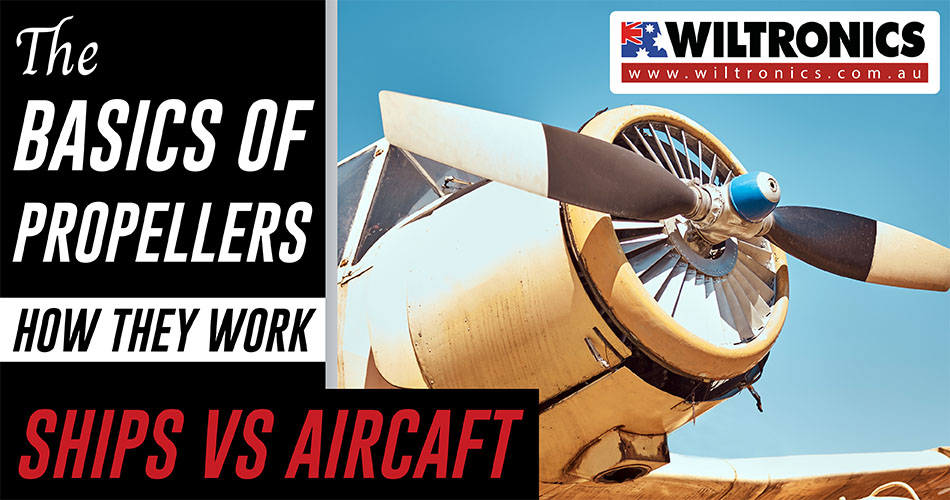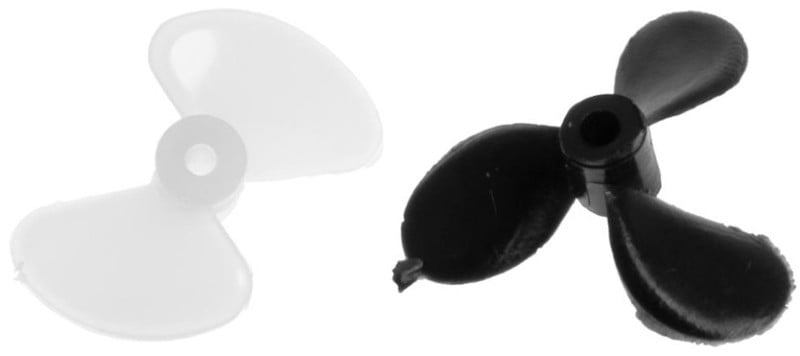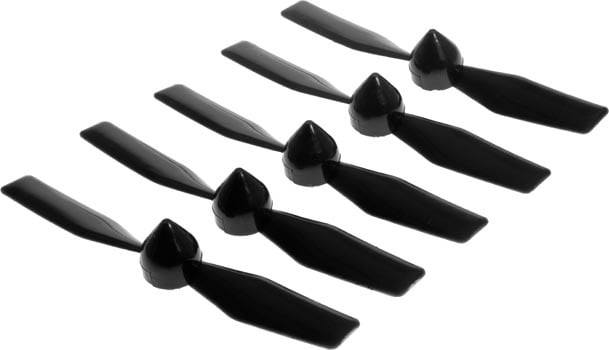The Basics of Propellers: How They Work, Ship vs Aircraft
November 2, 2022

Propellers play an important role in ships and planes.
Newton’s Third Law of Motion still holds true today. It may not always be that obvious, but in almost every move you make, there is an equal and opposite reaction.
This simply means that forces always act in pairs. Take rowing a boat, for example. You have to push the water backwards to move forward.
The force you put in the backward course gives a ‘reverse effect’ in the forward direction. In simple terms, the more you thrust back, the more you make headway.
And what does a propeller have to do with this, particularly on ships and planes? Technically, Newton’s Third Law: Action & Reaction applies to it.
Knowing how propellers work will give you a better understanding. Keep reading!
Propellers Explained
Propellers are widely used methods of transport (and important components) for travelling. They create thrust to propel a boat through water or an aircraft through the air.
They have the appearance of rotating fan-like structures, providing a method of propulsion. Their role is vital in every phase of performance on a boat or plane, from the engine life to fuel economy and safety.
Propellers can have anywhere from a single blade to six or more blades. This is in line with the efficiency needs of different ships and planes.
Marine Propellers
Marine propellers are made from corrosion-resistant materials. Aluminium and stainless steel are among the most commonly used materials.
Other popular types are alloys of nickel, aluminium and bronze. They are usually 10 to 15 % lighter than other materials and have higher strength.
The construction includes attaching some blades to the hub by welding them in one piece. Forged blades are also reliable and have greater strength.
At last, a marine propeller is constructed by sections of helicoidal surfaces. All these acts together to rotate through the water with a screw effect.
Aeroplane Propellers
For aeroplane propellers, the performance requirements and engine power are the major determining factors. As engine power increases, this requires more blades to utilise the increased power level.
The angle of a propeller’s blades and its overall size and shape also affect the amount of thrust generated. As for the design, there are three (3) materials used for the blades: wood, aluminium, and composite.
Wood blades were the primary material used prior to World War II. Today, they are popular in hobby or vintage aircraft, keeping with the restoration era.
Aluminium has introduced a more powerful alternative to wood. Aluminium alloy blades are stronger, lighter, and easy to repair. Their higher rotation speeds also add to their popularity.
Composite blades are made from carbon fibre. They offer reduced weight, less noise and lower vibration. Plus, they are more durable and easier to repair than other types of propellers.
How Do Propellers Work: Ships vs Aeroplanes?
The working principles of propellers are, as noted, related to Newton’s Third Law of Motion. Keeping this theory in mind, a plane’s propeller works almost the same way on a boat.
On an aircraft, it is used to transform the rational power of an engine into forwarding thrust. The propeller displaces the air pulling it behind (the action).
This air movement results in the plane being pushed forward (the opposite reaction). The more air pulled behind the propeller, the more thrust propulsion is generated.
An aeroplane powered by turboprop engines often features different numbers of propeller blades. Two or three on light general aviation planes and four or more on transport ones.
In contrast, a propeller propels the ship using the power generated by the main engine. The transmitted power is then converted from rotational motion, generating a thrust.
This imparts momentum to the water, resulting in a force that acts on the ship and pushes it forward. A ship can be fitted with one, two or three propellers depending on the speed and manoeuvring needs.
But they have somewhat different functions
Aeroplane propellers, for one, need to move a lot of low-density mass, i.e. on air, fast. An aeroplane cannot go any faster than the speed at which its propellers are moving the air.
Meanwhile, ships are slow-moving. Thus, their propellers do not need to move the water quickly like planes.
But considering ships are heavy, the propeller needs to thrust a lot of water mass to move them forward. Thus wide-blade propellers are ideal.
The Basics
Learn the basic terms associated with the operation of both ship and plane propellers below:
Chord line
The imaginary line drawn through the centre of the blade. All the way from its leading edge (at the hub) to its trailing edge (tip).
Pitch
A propeller’s blade usually has a similar angle to a screw, not straight. The pitch measures how far the propeller would move forwards in one revolution.
It also controls the air speed leaving the back of the propeller. Moreover, the pitch of the blade changes as you move along its surface from one end to the other.
It is steepest or shortest at the central hub and shallowest at the outer tip. For planes, you can calculate the pitch using the formula: pitch = 2.36 diameter height/width.
As for ships, the pitch ratio is usually in millimetres and falls between 0.5 and 2.5. In most cases, with an optimal value for vessels closer to 0.8 to 1.8.
Pitch effectively converts the torque of the propeller shaft. It thrusts by deflecting or accelerating the water, a.k.a. Newton’s Second Law.
Blade angle
The angle between the chord line and the plane of rotation. Measured in degrees and at a specific point along the length of the blade.
Angle and pitch are often used interchangeably, but they are not the same. The pitch is not the angle of the propeller blade but rather is determined by the blade angle.
An increase or decrease in one is associated with an increase or decrease in the other.
Angle of attack
This is the angle at which the air strikes the propeller blade. In a nutshell, it is the difference between where a wing is pointing and where it is going.
Increasing the angle of attack results in a boost in both lift and induced drag up to the point of a stall. The twist of a propeller blade helps maintain a more constant angle of attack.
That is along with the blade length to counteract the differences in blade speed.
Get Your Propellers Here!
If you are looking to try out some experiments to see how propellers work, check out the range below. They are also a great choice for hobbyists building models.

Model Boat Propellers Pack of 10
Product code: HA728x
This model boat propeller comes in a pack of 10 and is available in 2-blades or 3-blades. Great for maritime hobbies or DIY projects!
Drive with a rubber band or drill out the centre hole and fit DC Motors or drive shafts as required.

128mm Black Aeroplane Propeller Pack of 5
Product code: HA7293
Sold in a pack of 10. Drive with a rubber band or drill out the centre hole and fit DC Motors or drive shafts as required.
The Bottom Line
Understanding how propellers work in ships and planes can give you the upper hand. Whether for a DIY project, experiments, or building an actual model, good understanding guarantees good performance.
© Electrotech Brands Pty Ltd 2022


Write a Comment
You must be logged in to post a comment.